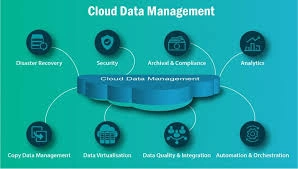Course Overview
Data integration is critical for organizations to gain comprehensive insights and make informed decisions. This course provides a thorough understanding of data integration techniques, equipping participants with the knowledge and skills to effectively combine data from multiple sources. Participants will learn about various data integration approaches, tools, and best practices, enabling them to handle complex integration scenarios, improve data quality, and streamline data workflows.
Course Duration
10 Days
Who Should Attend
- Data Analysts and Scientists
- Data Engineers and Architects
- Database Administrators
- IT Professionals involved in data management
- Business Intelligence and Data Warehousing Professionals
- Anyone interested in mastering data integration techniques
Course Objectives
By the end of this course, participants will be able to:
- Understand the principles and challenges of data integration.
- Identify and utilize various data integration techniques and tools.
- Develop effective strategies for integrating structured and unstructured data from multiple sources.
- Implement data transformation processes to ensure data consistency and quality.
- Handle real-time and batch data integration scenarios.
- Apply best practices in data governance and compliance during integration.
- Optimize data workflows to enhance performance and reduce latency.
- Troubleshoot and resolve common data integration issues.
- Understand the role of cloud services in modern data integration.
- Create and maintain scalable and efficient data integration pipelines
Course Outline:
Module 1: Introduction to Data Integration
- Understanding data integration concepts and its importance
- Types of data sources and formats
- Data integration challenges and solutions
Module 2: Data Profiling and Quality
- Data profiling techniques
- Data quality assessment and improvement
- Data cleansing and standardization
Module 3: ETL/ELT Processes
- ETL vs. ELT: Understanding the differences
- ETL process overview: Extract, Transform, Load
- ELT process overview: Extract, Load, Transform
- Data transformation techniques
Module 4: Data Modeling for Integration
- Data modeling concepts and methodologies
- Dimensional modeling and data warehousing
- Data marts and data lakes
Module 5: Data Integration Tools and Technologies
- Overview of popular data integration tools
- Cloud-based vs. on-premises solutions
- Tool selection criteria
Module 6: Data Extraction Techniques
- Database extraction
- File-based extraction
- API-based extraction
- Change data capture (CDC)
Module 7: Data Transformation and Enrichment
- Data cleaning and standardization
- Data transformation and aggregation
- Data enrichment techniques
Module 8: Data Loading and Deployment
- Loading data into target systems
- Incremental loading and full loads
- Performance optimization
Module 9: Data Integration Testing and Monitoring
- Data validation and quality checks
- Performance testing
- Monitoring and maintenance
Module 10: Data Integration Best Practices and Case Studies
- Data integration governance and metadata management
- Security and privacy considerations
- Real-world data integration case studies
Customized Training
This training can be tailored to your institution needs and delivered at a location of your choice upon request.
Requirements
Participants need to be proficient in English.
Training Fee
The fee covers tuition, training materials, refreshments, lunch, and study visits. Participants are responsible for their own travel, visa, insurance, and personal expenses.
Certification
A certificate from Ideal Sense & Workplace Solutions is awarded upon successful completion.
Accommodation
Accommodation can be arranged upon request. Contact via email for reservations.
Payment
Payment should be made before the training starts, with proof of payment sent to outreach@idealsense.org.
For further inquiries, please contact us on details below:






